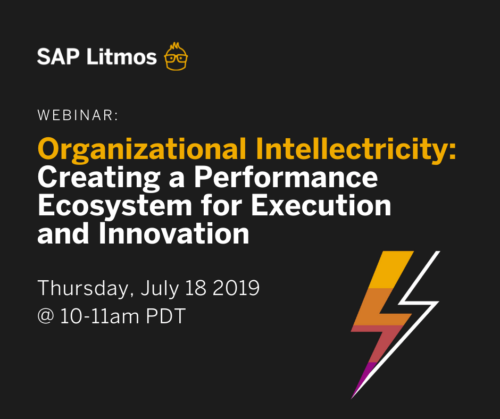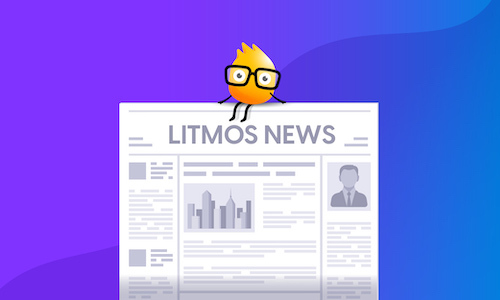What’s Organizational Intellectricity & Why Does It Matter?

Watch this recorded webinar to learn more about this topic.
Organizations need to learn! Now, that hasn’t been news since Senge’s The Learning Organization. Yet, there are a lot of necessary steps that aren’t being seen. And, let’s be clear, innovation is learning. When you’re coming up with new ideas you don’t know the answer in advance. Thus, you’re learning the answer through the process. It’s not like instruction, but it is learning.
Yet putting it into practice is hard. And research reveals that much of what we think we know is wrong. That is, many practices that characterize organizational interaction is contrary to what works best to facilitate the best outcomes! We can, and must, do better.
Why learn?
To keep up with the Joneses, organizations need to execute optimally. But keeping up isn’t the optimal game. The preferred choice is to get, and stay, ahead. And that requires going beyond the norm. Moreover, you can’t just hire your way out of this mess, even if you had the resources. You need to do better.
What does better look like? It looks like both fast and slow innovation. That is, it is both the necessary innovation required to deal with specific challenges – problems to solve, designs to create, research to conduct – and the background percolation of new ideas. You both need to move with alacrity to address the problems you know, and allow opportunity to surface new ideas that wouldn’t have emerged otherwise. And these approaches require a number of ways to sustain them.
What’s needed are both policies and practices that promote these forms of innovation, a culture that fosters the best outcomes, and leveraging technology to augment our intellect. There are known approaches, but they’re not often seen. The approaches we choose to take can be effective, or not. And we don’t want to do the wrong things!
Bad behaviors
Yearly performance reviews, gathering people together to address problems, and thinking of socializing as an interference with productivity are just several of the ways that organizations do things that aren’t conducive to the best thinking. The goal is alignment with how we think, work, and learn. And yet what we do in practice is anything but!
For instance, to develop people effectively, they need regular feedback. Regular coaching and mentoring can help develop not only skills, but help individuals feel engaged, which has a number of positive outcomes. Yet organizations instead focus on evaluations that are distant from the performance and the outcomes. Worse, we know those evaluations typically say more about the evaluator than the evaluated.
And brainstorming is a practice that has been widely used, and recently widely disparaged. And yet, done right, it’s very effective! However, the nuances between right and wrong are subtle. You can’t just wing this if you want to be learning optimally.
Finally, socializing, done right, is one of the keys to the ongoing learning of the organization. Having people share distributes learning and maintains social relationships as well as helping coordinate activity. Yet many organizations can fear that this is unproductive if not an outright opportunity for insurrection!
These are only three examples of many that illustrate the differences between the industrial age of conformity and execution and the information age of agility and experimentation. And while our understanding may shift as we learn more, we should be applying what is known now. Where there are direct experimental results, we should be employing them. Where not, there are good theoretical frameworks. Rather than replicate an irrelevant past, for all its problems, it’s time to reinvent the organization.
Doing better
To do better, you have to know better. You need to be aware of what research tells us about how we work alone and together, and then align the organization, and the technology, to that. You need to understand the practices, how to implement them, and how to support them. Our beliefs about how we think, work, and learn, aren’t always reflected in reality. As we’re increasingly recognizing…
We need to apply what’s known. The shift to a recognition of ‘situated’ cognition needs to be recognized. We reconstruct understanding on the fly, anew in every context, which has impacts on learning design and more. We can’t assume people will reliably perform across contexts, so we have to engineer that, or find ways around it. Whether it’s determining sufficient practice, or finding external support, we need to understand and accommodate.
A second recognition is that of ‘distributed’ cognition. Our thinking isn’t all ‘in our head’, but instead includes external representations. Whether it’s spreadsheets, diagrams, checklists, or more, recognizing the external support capabilities and the situations where they make sense is critical. And these supports can be more useful than formal training in many performance situations, and critical in helping one represent their thoughts for informal learning.
The recognition of awareness of social learning likewise has sparked changes. It really seems we developed social so we could learn! In fact, the notion of ‘education’ (and ‘training’) isn’t universal. Instead, we learned together because it accelerated the process. And while there are times we can learn alone, and some even when we should, there’s great power in social learning. And this is true for formal learning and training as well as for informal learning.
The Path Forward
To move forward, several things are required. We need the knowledge, the tools, and a recognition of how they integrate. It takes a vision for the future, and a strategy to get there. And we need to take what’s known about making successful change.
We know that large organizational revisions are problematic. The Satir Change Model has been used to indicate the disruption that occurs with change efforts, and a rational interpretation is to use small steps. Similarly, Sutton & Rao’s Scaling Up Excellence talks about starting small and slow before scaling. The nuances of change management have been demonstrated to be important. There are important aspects about how as much as what.
Organizational intellectricity is about engaging the people in the organization most effectively to continue to adapt and succeed. Coupled with transformational learning and performance support in ways that recognize our cognitive understandings, we can truly operate with inspiration and execution.
Please watch this recorded webinar to learn more about this topic.





